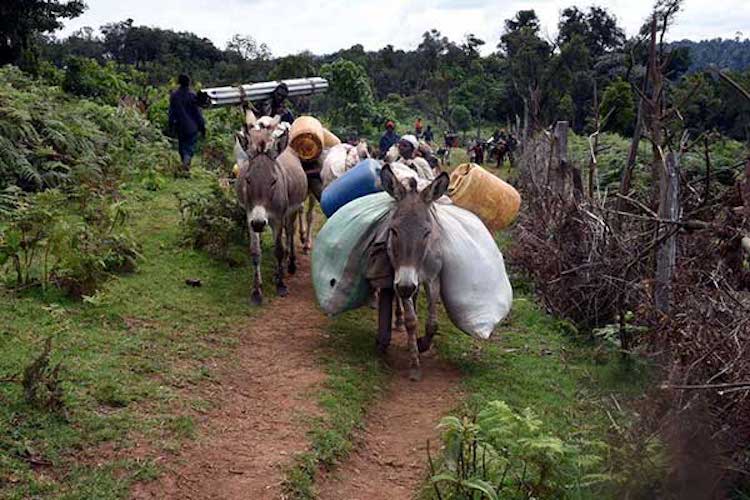By Lisa Vives, Global Information Network
NEW YORK | NAIROBI (IDN) – Some 40,000 settlers in the Maasai Mau forest in Kenya face imminent eviction by the Kenyan government which says it is protecting the forest in the name of conservation.
Deputy President William Ruto said those who encroached on the forest should be flushed out but in a humane manner. “We respect every Kenyan’s rights. No force should be used as they are Kenyans and not animals,” Ruto said.
Ruto’s calls for negotiations were dismissed by Environment Cabinet Secretary Keriako Tobiko who declared that the evictions were non-negotiable and that there would be no compensation.
“I have heard some people talking of compensation. What compensation when these people have continually destroyed the forest? They will all be evicted,” said Tobiko.
Forced evictions are nothing new in Kenya. The indigenous Sengwer people were evicted from the Embobut forest this year in what Amnesty International called “grossly flawed, illegal and violent actions” of the Kenyan government.
The report Families Torn Apart: Forced Evictions of Indigenous People in Embobut Forest was released in May 2018.
“The Sengwer people were never genuinely consulted nor was their free and informed consent ever obtained prior to their eviction. This is a flagrant violation of Kenyan and international law,” said Amnesty’s Executive Director for Kenya, Irungu Houghton.
A government task force on conserving forests by ejecting forest communities concluded that the Kenya Forest Service colluded in extensive illegal logging and destruction of the Embobut Forest, for which the Sengwer are being blamed and persecuted. Despite this, the task force recommended the continued indiscriminate eviction of communities living in endangered forests, including the Sengwer in Embobut.
Patrick Gathara, opinions columnist for the Washington Post, concluded that the practice of evictions “is not the result of some terrible natural disaster, but rather the deliberate action of President Uhuru Kenyatta’s administration”.
Another community of 30,000 in Kibra, the largest slum in Nairobi, saw their homes, hospitals, shops and schools flattened to make room for a road.
“Development” and “conservation” have always been pretexts for displacing Kenyans, said Gathara. “One-hundred twenty years ago, the railway link to Uganda was built, opening up Kenya’s hinterland to colonial settlement and exploitation at the turn of the 20th century. The development of the railway resulted in the massive alienation of land and dispossession of the natives.”
A claim has just been submitted to the International Criminal Court. [IDN-InDepthNews – 28 August 2018]
Photo: Families leave Maasai Mau Forest on July 8, 2018 as evictions of illegal settlers started. Photo | File | Nation Media Group
IDN is flagship agency of the International Press Syndicate.
facebook.com/IDN.GoingDeeper – twitter.com/InDepthNews

